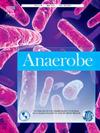Coculture systems to study interactions between anaerobic bacteria and intestinal epithelium
IF 2.6
3区 生物学
Q3 MICROBIOLOGY
引用次数: 0
Abstract
Coculture systems (CCSs) are experimental tools used to study the interactions of anaerobic bacteria among themselves and the gut epithelial cells under conditions simulating the human gut, unlike those in animal models. Although the studies on animal models are useful in determining the relationship between the causative agents of infections and human infections, they have disadvantages, such as ethical issues, in addition to the differences in the microbiota of the animal and humans. Therefore, the results obtained using animal models cannot be directly extrapolated to humans. CCSs can more completely reflect in vivo gut homeostasis and contribute to better understanding of the interplay between the intestinal cells and anaerobes, prevalent among the gut bacteria. Moreover, they provide new insights on the pathogenesis of infections and aid in assessing the usefulness of new probiotics and antibacterials. Therefore, CCSs, including the gut-on-a-chip models, can significantly improve microbiota-based therapy. Moreover, they can also be used to detect microbiota-derived metabolites such as those with mutagenic properties. The aim of this review was to explore selected CCS models of anaerobes with intestinal epithelium and their application in investigating intestinal homeostasis. The focus was to highlight the application of different CCSs and important data obtained from their implementation.
共培养系统研究厌氧细菌和肠上皮之间的相互作用。
共培养系统(CCSs)是一种实验工具,用于研究厌氧细菌在模拟人类肠道的条件下与肠道上皮细胞之间的相互作用,与动物模型不同。虽然对动物模型的研究在确定感染病原体与人类感染之间的关系方面是有用的,但它们也有缺点,例如伦理问题,以及动物和人类微生物群的差异。因此,用动物模型得到的结果不能直接外推到人类身上。CCSs可以更全面地反映体内肠道稳态,有助于更好地理解肠道细胞与肠道细菌中普遍存在的厌氧菌之间的相互作用。此外,它们为感染的发病机制提供了新的见解,并有助于评估新的益生菌和抗菌药物的有效性。因此,CCSs,包括肠道芯片模型,可以显著改善基于微生物群的治疗。此外,它们还可用于检测微生物衍生的代谢物,例如具有诱变特性的代谢物。本文旨在探讨具有肠上皮的厌氧菌的CCS模型及其在肠道稳态研究中的应用。会议的重点是强调不同CCSs的应用以及从实施过程中获得的重要数据。
本文章由计算机程序翻译,如有差异,请以英文原文为准。
求助全文
约1分钟内获得全文
求助全文
来源期刊

Anaerobe
生物-微生物学
CiteScore
5.20
自引率
8.70%
发文量
137
审稿时长
76 days
期刊介绍:
Anaerobe is essential reading for those who wish to remain at the forefront of discoveries relating to life processes of strictly anaerobes. The journal is multi-disciplinary, and provides a unique forum for those investigating anaerobic organisms that cause infections in humans and animals, as well as anaerobes that play roles in microbiomes or environmental processes.
Anaerobe publishes reviews, mini reviews, original research articles, notes and case reports. Relevant topics fall into the broad categories of anaerobes in human and animal diseases, anaerobes in the microbiome, anaerobes in the environment, diagnosis of anaerobes in clinical microbiology laboratories, molecular biology, genetics, pathogenesis, toxins and antibiotic susceptibility of anaerobic bacteria.
 求助内容:
求助内容: 应助结果提醒方式:
应助结果提醒方式:


